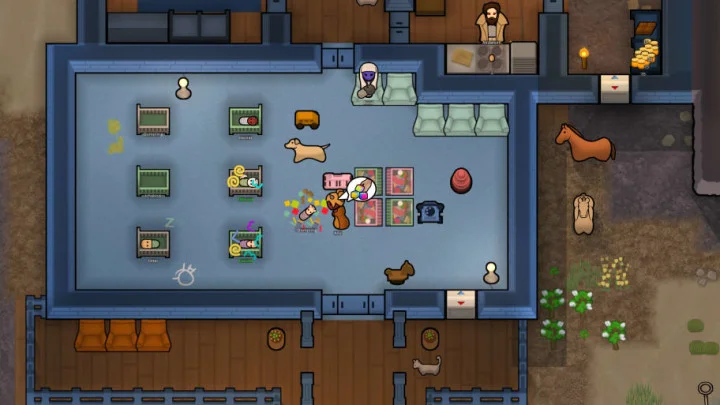Genes play a huge role in RimWorld’s newest DLC, Biotech. RimWorld was initially released in 2013, and since then there have been three additional installments with downloadable content to expand gameplay and to explore more into a distant futuristic world. The newest DLC for the colony sim game launched Friday, Oct. 21. For $24.99 players now have the ability to raise a family with children and tinker with genetic modifications.
In this game, reproduction can happen both naturally and artificially. In a natural birth, colonists and outsiders are able to become impregnated, whereas an artificial birth can conceive a fetus with technology. With the addition of artificial birth, there is a lot of room for genetic modification. Here is a breakdown of the ways players can modify genes to their advantage in RimWorld Biotech.
RimWorld Biotech Genes
There are over 200 genes coming to RimWorld. These sorted into two categories: germline genes and xenogenes. Germline genes follow the rules of normal genealogy in that they are prevalent in every cell and are passed onto children. On the other hand, xenogenes are technologically implanted and are not inherited.
Genes are a balancing game. When conceiving a child, genes must be chosen carefully. Players must consider the drawbacks to genes that might seem resourceful. For example, the consequence of a powerful gene would mean that a person would require more food to sustain themself.
Here are a few genes that are being introduced into the game:
- Ageless: Carriers will not age or face the consquences of aging
- Longjump legs: Carriers are able to jump long distances
- Fire spew: Carriers gains will have flammable bile which sticks and ignites when it makes contact with something
- Never sleep: Carriers will not need to sleep
This article was originally published on dbltap as RimWorld Biotech Genes Explained.









